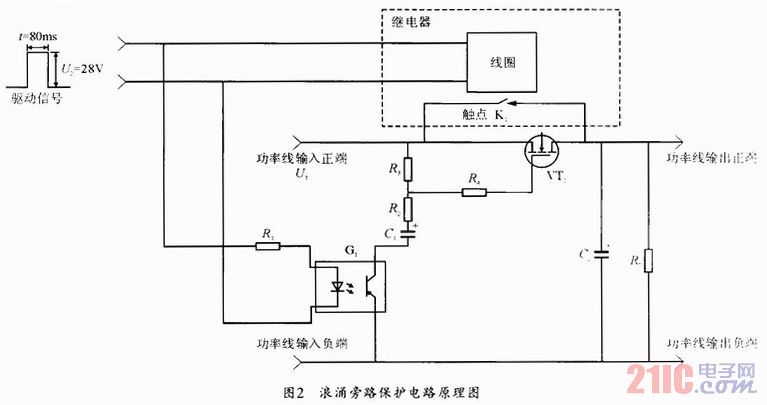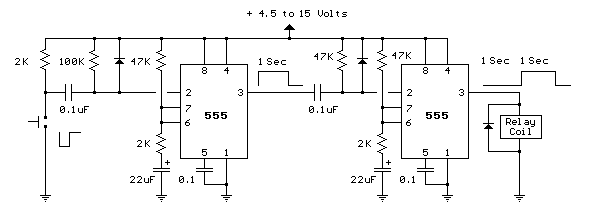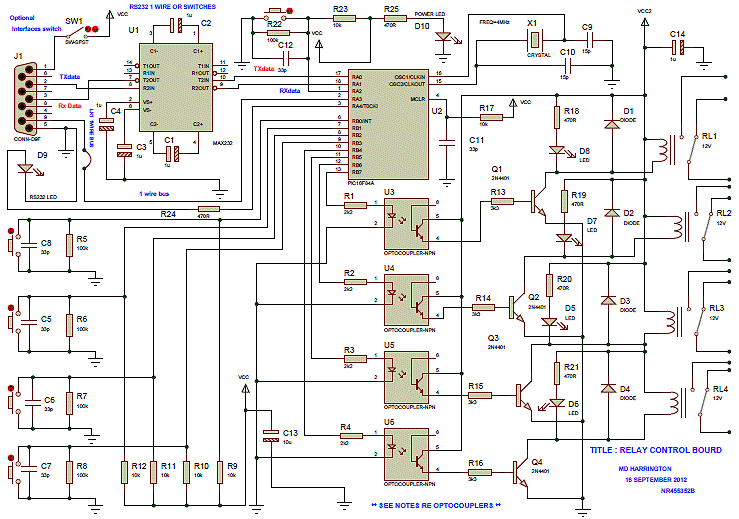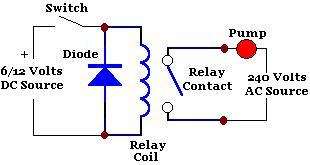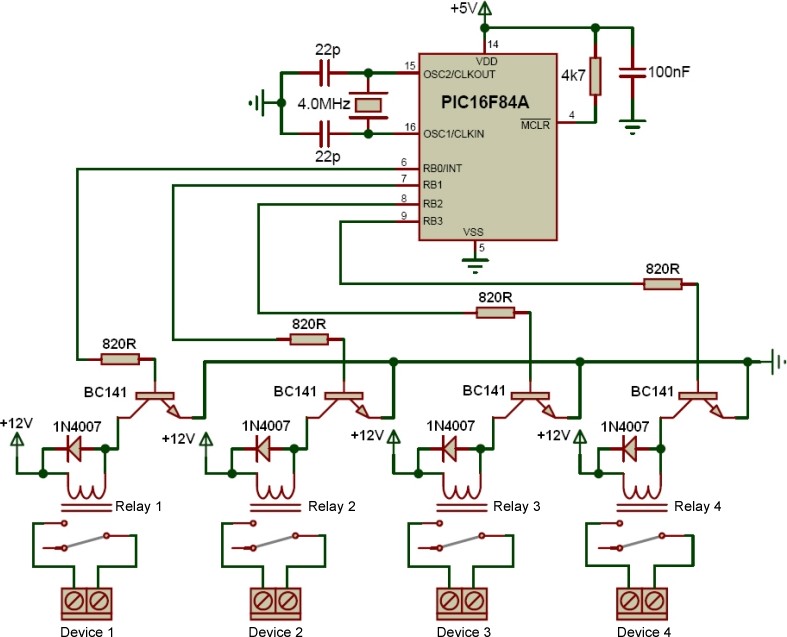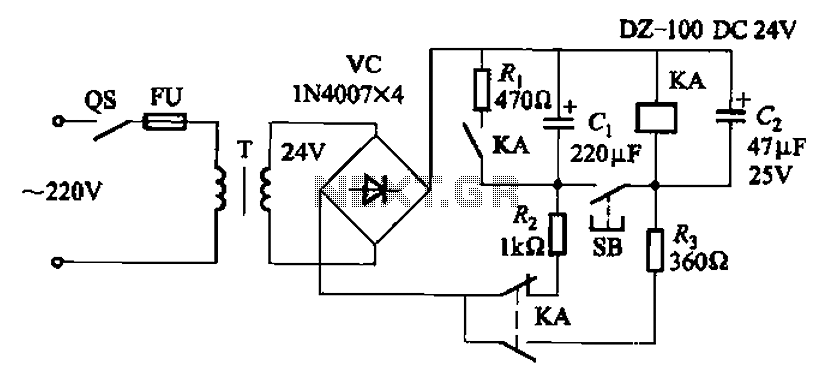
Time-delayed relay
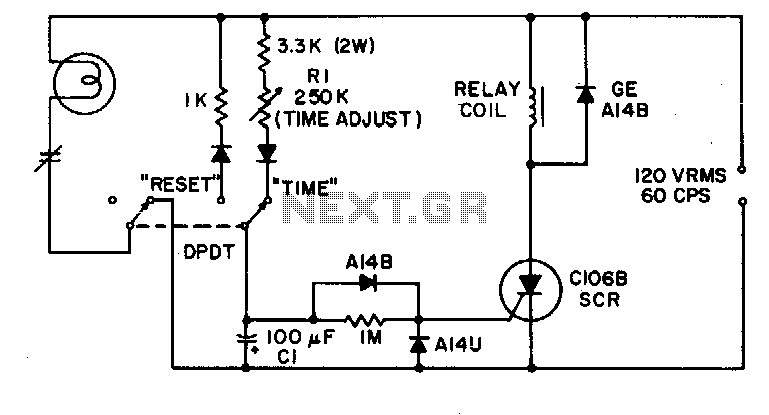
This simple timing circuit can delay an output switching function from 1 second to about 1 minute. The SCR is triggered by only a few microamps from the timing network R1-C1 to energize the output relay.
The timing circuit described employs a silicon-controlled rectifier (SCR) as the primary switching element, utilizing a resistor-capacitor (R-C) timing network to establish the desired delay. The timing network consists of resistor R1 and capacitor C1, which work together to create a time constant that governs the delay before the output relay is activated.
Upon powering the circuit, capacitor C1 begins to charge through resistor R1. The time it takes for the capacitor to charge to a specific voltage level, typically the gate trigger voltage of the SCR, determines the duration of the delay. The relationship between the resistance (R1), capacitance (C1), and the voltage across the capacitor can be described by the formula:
\[ t = R1 \times C1 \times \ln\left(\frac{V_{supply}}{V_{supply} - V_{trigger}}\right) \]
where \( t \) is the time delay, \( V_{supply} \) is the supply voltage, and \( V_{trigger} \) is the gate trigger voltage of the SCR.
Once the voltage across C1 reaches the gate trigger threshold of the SCR, the SCR conducts, allowing current to flow through the output relay coil. This energizes the relay, closing its contacts and activating the connected load. The SCR remains in the conducting state until the current through it falls below a certain holding current threshold, at which point it turns off. This characteristic allows for the relay to remain activated for as long as the input power is maintained.
The circuit's design ensures that only a minimal amount of current, measured in microamps, is required to trigger the SCR, which makes it efficient and suitable for applications where low power consumption is critical. Overall, this timing circuit is ideal for applications requiring precise control of output timing, such as in automation systems, delay timers, or sequential control processes.This simple timing circuit can delay an output switching function from 1 seconds to about 1 minute The SCR is triggered by only a few microamps from the timing network Rl-Cl to energize the output relay.
The timing circuit described employs a silicon-controlled rectifier (SCR) as the primary switching element, utilizing a resistor-capacitor (R-C) timing network to establish the desired delay. The timing network consists of resistor R1 and capacitor C1, which work together to create a time constant that governs the delay before the output relay is activated.
Upon powering the circuit, capacitor C1 begins to charge through resistor R1. The time it takes for the capacitor to charge to a specific voltage level, typically the gate trigger voltage of the SCR, determines the duration of the delay. The relationship between the resistance (R1), capacitance (C1), and the voltage across the capacitor can be described by the formula:
\[ t = R1 \times C1 \times \ln\left(\frac{V_{supply}}{V_{supply} - V_{trigger}}\right) \]
where \( t \) is the time delay, \( V_{supply} \) is the supply voltage, and \( V_{trigger} \) is the gate trigger voltage of the SCR.
Once the voltage across C1 reaches the gate trigger threshold of the SCR, the SCR conducts, allowing current to flow through the output relay coil. This energizes the relay, closing its contacts and activating the connected load. The SCR remains in the conducting state until the current through it falls below a certain holding current threshold, at which point it turns off. This characteristic allows for the relay to remain activated for as long as the input power is maintained.
The circuit's design ensures that only a minimal amount of current, measured in microamps, is required to trigger the SCR, which makes it efficient and suitable for applications where low power consumption is critical. Overall, this timing circuit is ideal for applications requiring precise control of output timing, such as in automation systems, delay timers, or sequential control processes.This simple timing circuit can delay an output switching function from 1 seconds to about 1 minute The SCR is triggered by only a few microamps from the timing network Rl-Cl to energize the output relay.
